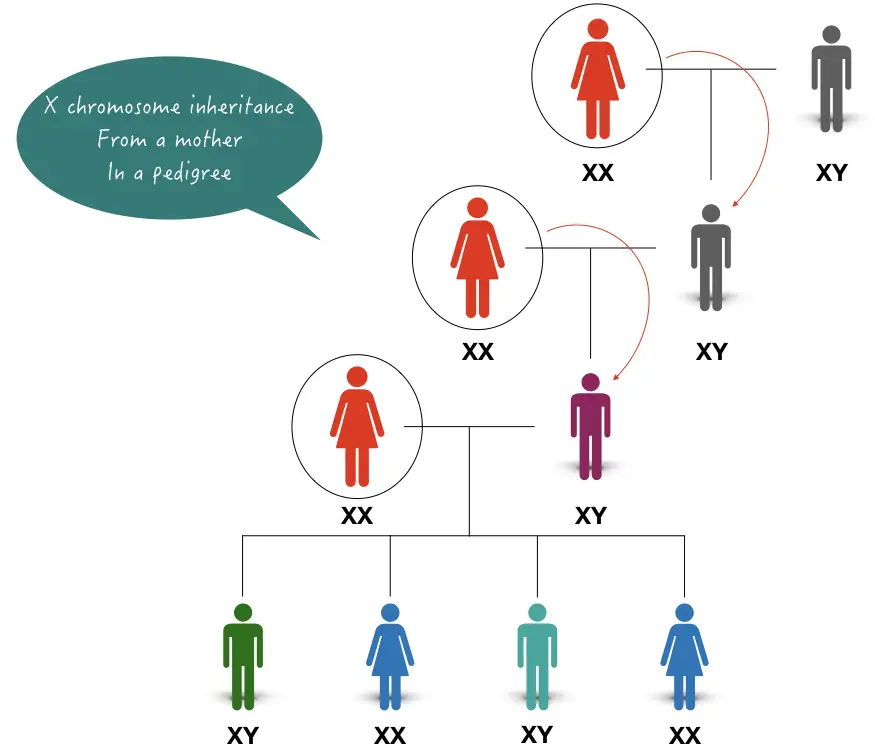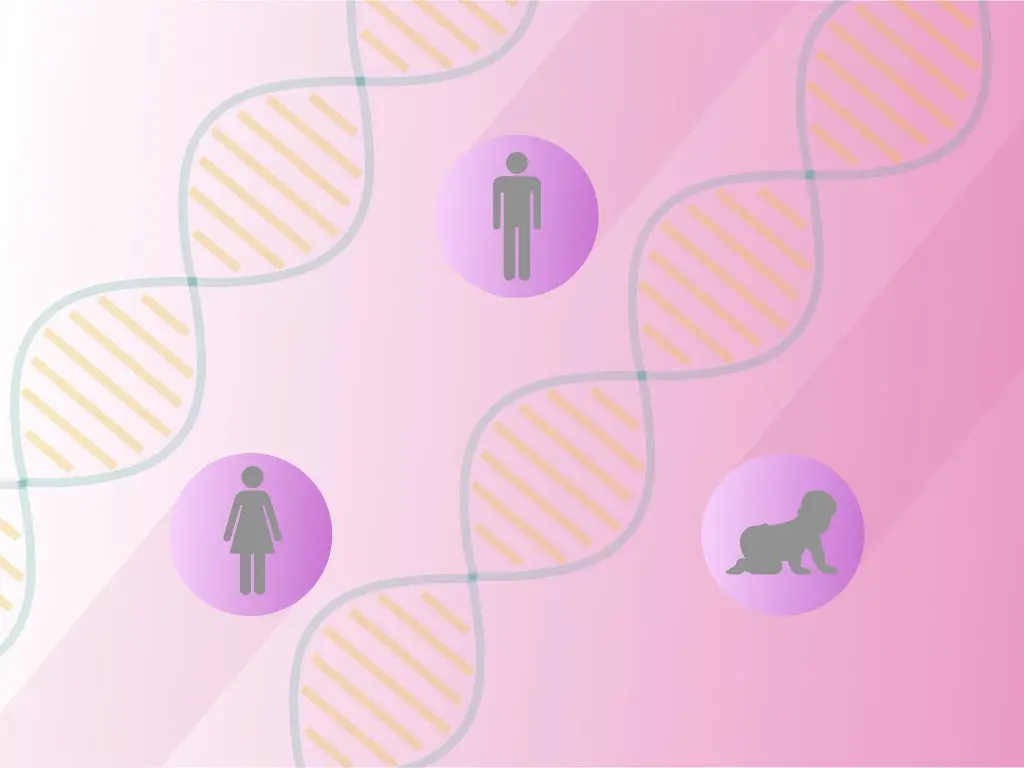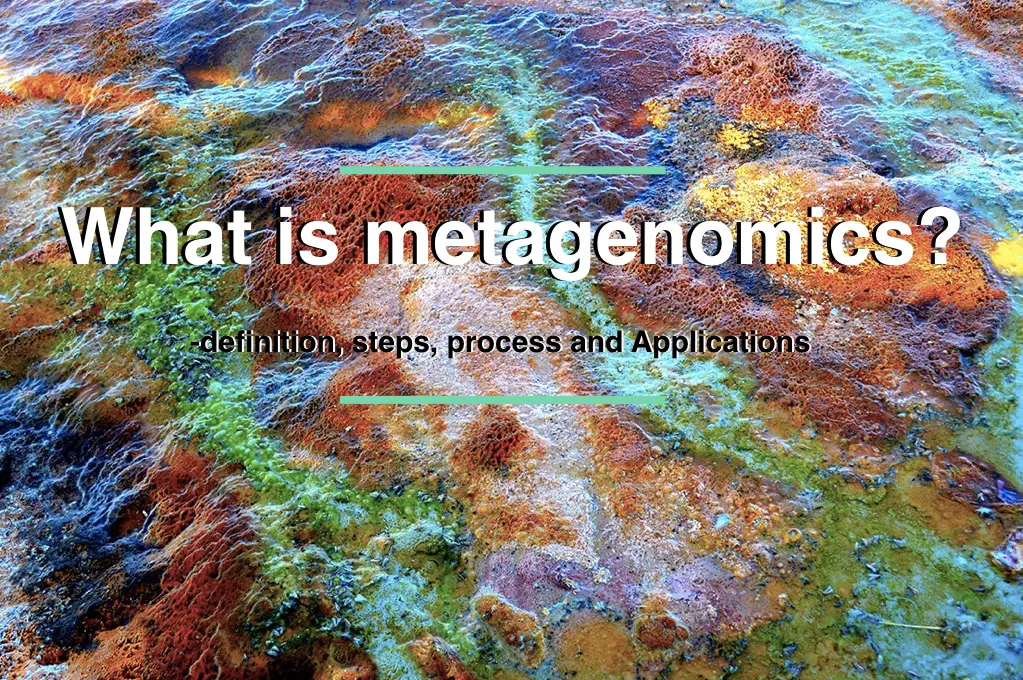“Mitochondrial and X chromosomal DNA, traits like fetus’ gender & intelligence and related-diseases are inherited from the mother.”
The present article has very interesting information on how genetic inheritance differs between males and females. Certain traits have an inheritance pattern based on gender.
Meaning, father and mother’s genetics govern a separate group of traits. Genes, Traits and diseases when inherited from father and mother are broadly classified as paternal and maternal inheritance, respectively.
In this topic, I will explain to you maternal inheritance, but before that let us first quickly understand the mechanism of inheritance and inheritance of traits.
Males and females have a separate genetic composition. A male has one X and one Y chromosome while a female has two X chromosomes along with the autosomes.
So males and females have lacked one entire chromosome, one X in male and Y in female, and perhaps it isn’t necessary that’s why! We can say their genetic composition is different and so is the inheritance pattern.
Among 23 pairs, 22 pairs of autosomal chromosomes are inherited as either autosomal dominant or recessive. However, the sex-chromosomes have a separate inheritance pattern.
In females, the inheritance pattern of X chromosomes is X-linked dominant or recessive while in males, along with the X, Y-linked inheritance is also possible.
Meaning the genes located on the Y chromosomes can only be passed to males. Likewise, several genes can be inherited from the females only, but aren’t the only genes located on the X chromosome.
Among the 2n (46) chromosomes, males contribute 23 chromosomes (n) while females contribute another 23 chromosomes (n) and form a diploid fetus. When the fetus grows it will have a genome inherited from its parent.
However, the question is still unanswered, is any gene set passed on from the mother only? Any traits and diseases only a mother transmitted to offerings?
Let us find out.
Key Topics:
Definition of maternal inheritance:
“When genes, traits or disease transmitted from only a mother or from the maternal side, is considered as Maternal inheritance.”
Maternal inheritance:
We, humans, have the same number of chromosomes i.e 23 pairs and a total of 46, excluding aneuploidies. As we said, only a single pair of sex chromosomes separate males from females.
A set inherited from father and mother is said as the paternal and maternal inheritance of traits, respectively. Only the DNA, which isn’t present on chromosomes, doesn’t follow this pattern.
Several organelles present in cytoplasms such as chloroplast and mitochondria have their own set of genes that is independent of the nuclear DNA and are inherited separately, known as cytoplasmic or organelle DNA.
Interestingly, the mitochondria, and so the genome of mitochondria have maternal inheritance, research suggests. Meaning, genes located on the subgenome of the mitochondria are inherited from the mother only, as per the hypothesis.
To understand how it’s happened, we have to first briefly go through the process of fertilization.
The egg is relatively larger than the sperm and has more cytoplasm. Imagine the fertilization process occurring, the head of sperm gets into the egg and consequently, the nuclear DNA combined.
The tail and mid part are mostly lost or degraded, therefore only sperm nuclear DNA can take part in zygote formation. Major cytoplasmic constituents of the newly formed fetus came from the egg only and so the mitochondria too.
Present theory suggests that the mitochondrial genes have a maternal origin which a fetus carries. We can say that what is present in the cytoplasm is mostly obtained by the egg itself and not by the sperm.
When a mother’s mitochondrial genome carries a defective gene set or a disease gene, it may pass on to the offspring. And cause a lethal effect. Notwithstanding, recent findings also suggest that males also inherited a small percentage of mitochondria.
In summary, genes, traits and diseases associated with mitochondrial DNA inherits maternally.
Besides, the cytoplasmic DNA; genes located on the X chromosome are transmitted maternally/ from a mother. In a male all genes located on the X chromosome come from his mother, meaning has a maternal lineage.
But when it comes to a female, genes on one X chromosome come from a father and from a mother. If we talk more in-depth, that one chromosome, a father contributed, came from the maternal side, indeed.
Put simply, genes governing traits and associated disease on the X chromosome are inherited from the mother only, more precisely from the female individual. Take a look at the figure below,

The X chromosome has been evolved thousands of years ahead of the Y chromosome, in females. So the pedigree shows that the genes located on the X-chromosome are actually passing down from the mother only. And so the traits and disease-associated too.
Now let us explore the list of genes, diseases and traits located on the X chromosome.
List of genes inherited from mother only:
| Mitochondrial genes | MT-CO1, MT-CO2, MT-CO3, MT-CYB, MT-ND1, MT-ND2, MT-ND3, MT-ND4L, MT-ND4, MT-ND5, MT-ND6, MT-ATP8, MT-ATP6, MT-RNR2 and genes for tRNA and rRNA. |
| X chromosomal genes | ZNF family genes, TRO, SMS, GATA1, FATE1 and AIC. |
Maternally inherited mitochondrial genes:
- MT-CO1, MT-CO2, and MT-CO3 for cytochrome c oxidase
- MT-CYB for cytochrome B complex III
- MT-ND1, MT-ND2 and MT-ND3, MT-ND4L, MT-ND4, MT-ND5, MT-ND6 for NADH dehydrogenase
- MT-ATP8 and MT-ATP6 for ATP synthase
- MT-RNR2 for humanin
- Various tRNA and rRNA genes
Maternally inherited X chromosomal genes:
- ZNF family genes- encoding Zinc finger protein
- TRO- Troponin
- SMS- spermine synthase
- GATA1- GATA1 transcriptional factor
- FATE1- fetal and adult testis-expressed transcript protein
- AIC- protein AIC
List of diseases inherited from mother only:
As we said, several diseases governed by genes enlisted above have a female inheritance. Here is the list of diseases.
List of diseases inherited from mitochondrial genes:
- Age-related hearing loss
- Cytochrome c oxidase deficiency
- Leigh syndrome
- Kearns-Sayre syndrome
- Maternally inherited diabetes
- Maternally inherited deafness
- Mitochondrial complex III deficiency
- Nonsyndromic hearing loss
- Several types of cancer
- Pearson syndrome
- Myoclonic epilepsy with ragged red fibers
List of diseases inherited from the X chromosomal genes:
| X-linked recessive diseases | X linked dominant diseases |
| Hemophilia A | Rett syndrome |
| Hemophilia B | Incontinentia pigmenti |
| Duchenne muscular dystrophy | Golts syndrome |
| Becker’s muscular dystrophy | X-linked dominant porphyria |
| X linked ichthyosis | Aicardi syndrome |
| G6PD |
Traits inherited from mother only:
Traits are the visible characteristics or phenotypes that a gene produces. For example, hair length, hair color, eye color, height and skin color are several traits governed by different genes.
Here in the present segment of the article, we will discuss several traits possibly a mother inherits.
The gender:
The X and Y chromosome has the power to decide the gender of the fetus. XX in female and XY in male is the combination. Studies show that genes of maleness are located on the Y chromosome.
A huge TDF region on the Y chromosome has genes that favor maleness and helps in developing male secondary sex characters such as masculinity, hirsutism, semen production and testes development.
So the “Y” is indeed important for males, however, not completely. Genes located on the autosomes and X chromosomes do participates in the process of sex determination and differentiation.
Now the interesting thing comes!
Technically, a fetus becomes female or ‘not female’ when having two or a single X chromosome, respectively. So the major factor which decides gender is the X chromosome only.
Although sex differentiation is a complex process, the presence or absence of the X chromosome does have pivotal significance. And therefore we can say, the mother has the power to decide the gender.
If this makes no sense for you, imagine the exact opposite condition to this. The presence of the Y chromosome with X develops into male (if all is well!) but if the fetus lacks Y chromosome and only has a maternal X chromosome, it may develop into a female (monosomy of X).
Although these types of fetuses may have mixed genitalia or several genital abnormalities. Let’s see what another theory suggests.
Boys are likely to look like their mothers! That is also genetically true because the X chromosomes inherited maternally have more genes than the Y chromosome. Meaning, more of a mother’s part will pass on to a male child.
Intelligence and Mental abilities:
It is also believed that the traits of intelligence and Mental abilities are inherited from the mother mostly. Genes related to intelligence, motor skills and other activities associated with mental abilities are located on the X chromosomes.
Or genes on the X participate in several mental processing pathways.
The mother contributes it to the males completely, although, in the case of females, it comes from either male or female.
Again, an X chromosome contributed from males, was derived from the female individual. Henceforth, this trait has a solely maternal inheritance.
Red-green color blindness:
RG/ Red-Green color blindness is an X-linked recessive trait transmitted from the DNA located on the X chromosome. Technically, males are more at risk of developing RG-color blindness compared with females as they have only a single X chromosome.
As we discussed, All X chromosomes have a maternal origin. So, we can say a trait has maternal inheritance/ inherited from the mother.
Hemophilia:
If we are talking about the disease trait, hemophilia A is another condition that only the X chromosome carries. It’s a condition in which blood can’t clot properly and is inherited as X-linked recessive.
Note that the environment and the lifestyle of a person also have a major impact on developing various traits. These are several traits a mother’s X chromosome governs, besides, hair color, eye color, height and weight of a child may have inherited from mother. No scientific evidence clearly supports it.
Before wrapping up this article, I want to share with you some other important pieces of information. Every biological reaction needs energy, ATP is one of the energy molecules synthesized in the mitochondria.
So we can say, ‘energy’ is provided by the mitochondria as ATP has a maternal origin. Our mother is a power supplier to us! ?
Several genes of the mitochondrial subgenome also have a role in the aging process. Henceforth, the trait “aging” is acquired from the mother. Note that the length of the telomere also has a pivotal role in the aging process.
Wrapping up:
In summary, Genes located on the X chromosome and mitochondria have maternal inheritance, meaning, a mother contributes it. And so the governing traits and disease-related also have a maternal inheritance.
Notedly, it isn’t yet clear how our genome decides which gene set to activate- paternal or maternal. Also, we can’t even predict whether expressed genes have a paternal or maternal origin or not.
This shows how complex our genome and the mechanism of inheritance are! We still do not have techniques to fully understand the genome and expression of traits.
Source:
Giles RE, Blanc H, Cann HM, Wallace DC. Maternal inheritance of human mitochondrial DNA. Proc Natl Acad Sci U S A. 1980;77(11):6715-6719. doi:10.1073/pnas.77.11.6715


